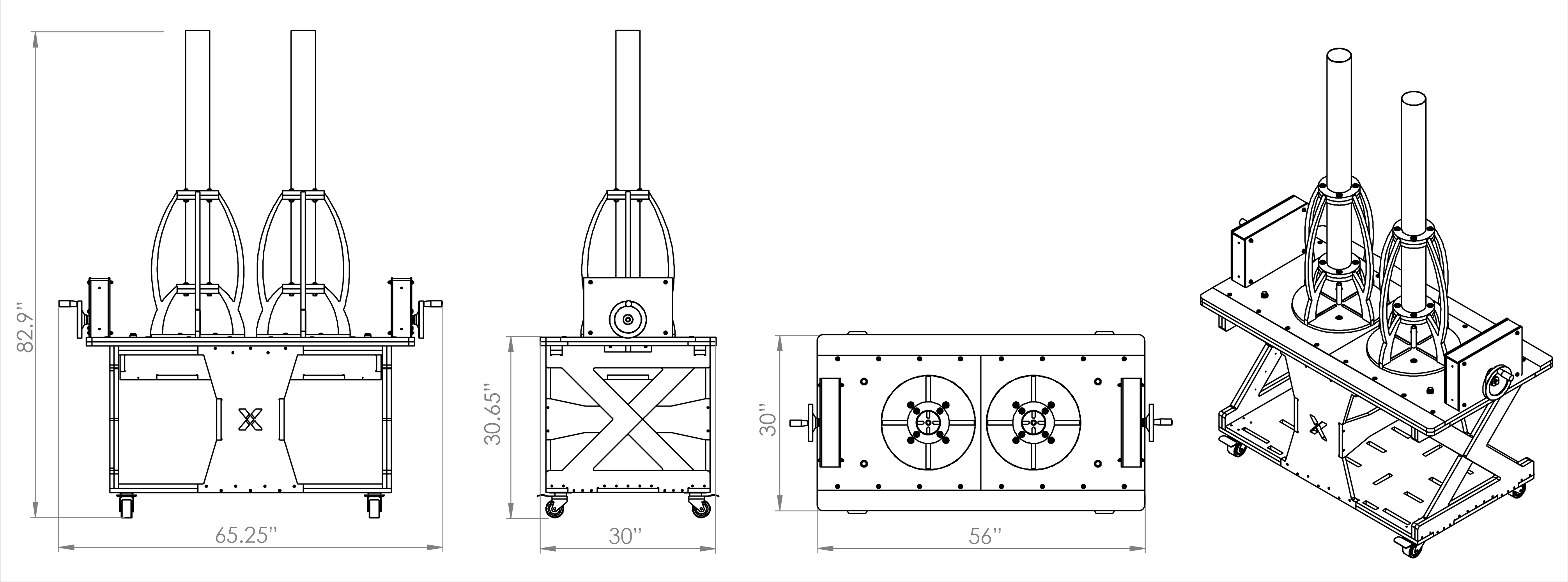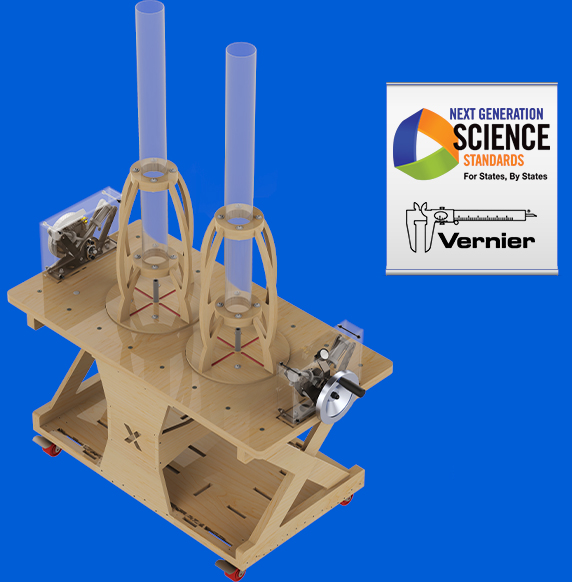STEM Concepts Learned From Use of Air Rocket FLEXCART: Grade Bands 3-5
Phenomena of Newton’s Laws:
Newton’s First, Second, and Third Law of Motion will be experienced first-hand through an inquiry-based investigation performed in a collaborative manner using the Air Rocket FLEXCART.
Models:
Students will use the Air Rocket FLEXCART model, a form of exhibit technology, to explain real phenomena and relationships in rocketry but also use data and observations to evaluate the effectiveness of the model.
Variables:
Students will be able to manipulate variables and observe the results on the flight of their rockets.
Engineering Design:
Students design their own air rockets for best performance. This will include analyzing data from previous tests and changing designs accordingly. Students will work collaboratively to produce a design within a given budget and time limit which incorporates scientific principles taught in earlier lessons.
Math Calculations:
Force Calculations
Computer Science:
Using a rocket simulation, students will understand that programming involves feeding the variables into a program in order to accomplish the big picture goal, in this case, the highest flying rocket.
Vernier Technology:
The use of the Vernier Go Direct® Photogate and accompanying adaptor, created by FLEXCART, allows students to collect, analyze and interpret real-time scientific data from their Air Rocket investigation. The photogate can be purchased separately from Vernier.com and used with the Air Rocket FLEXCART.
STEM Careers associated with the Air Rocket Unit Plan:
- Aerospace Engineer
- Rocket Engineer
- Rocket Scientist
- Pyrotechnics Specialist
- Metallurgist
- Physicist
- Computer Engineer
- Computer Scientist
- General Engineer
- Meteorologist
- Research Engineer
- Astronaut
Air Rocket FLEXCART Specs:


